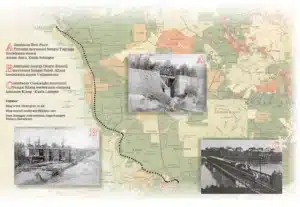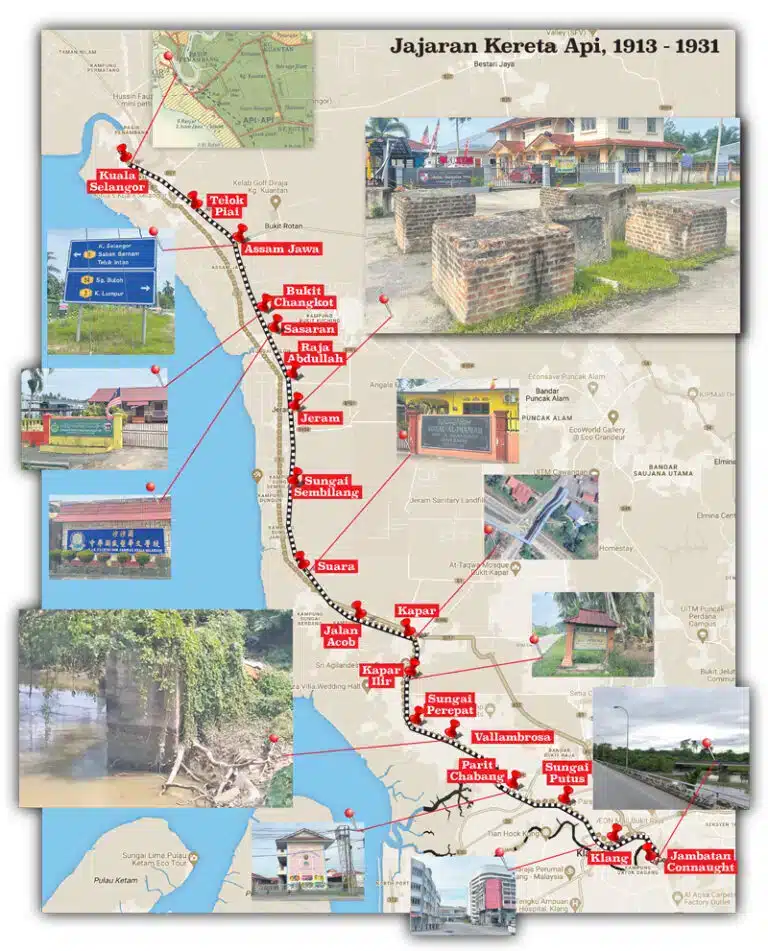By Nadiah Zamlus
SHAH ALAM, Sept 18 — Within the next five years, the state government plans to construct a railway line from Klang to Kuala Selangor, in collaboration with the Federal government.
The purpose of this project is to shorten the travel time to the northern parts of the state, compared to the current road routes.
Simultaneously, it encourages the use of public transportation. This plan is expected to boost the economy in the surrounding areas along the west coast of Selangor.
Yet it is essential to note the railway route between Klang and Kuala Selangor has existed for over a century. In February 1913, the administration of the Federated Malay States built a route in the same area to transport coffee and rubber commodities, as well as to serve the local population at the time.
The early efforts to build a rail line to northern Selangor were initiated by the Governor of the Straits Settlements, Sir Frederick Weld, in 1886. At the time, he detailed a route to construct a train railway from Klang to the town of Jeram.
However, construction did not immediately occur, as there was a lack of significant demand for transporting commodities along the Klang to Kuala Selangor route.
The British were more interested in building railway lines in areas with commodity production, especially Kuala Lumpur at the time, which had a vested interest in transporting tin ore.
In 1908, the Malay Mail reported complaints from residents of Selangor’s west coast. The main bus transportation from Klang to Kuala Selangor was very limited, despite its affordability.
After several years, the colonial authorities finally conceded and began constructing the railway line between Klang and Kuala Selangor in January 1911, which was completed in 1913. It functioned for 18 years before its service was suspended in November 1931.
Unused Route
In 1935, The Federated Malay States Railways (FMSR) leased the route to the Public Works Department, on the grounds the railway route was no longer competitive due to the presence of improving roads.
That same year, a newspaper editor commented on the matter. The Klang-Kuala Selangor railway route was unpopular because FMSR did not connect concrete rails to the Kuala Selangor port.
This posed difficulties for traders, leading them to prefer using the road for transporting goods. Slowly but surely, the Klang-Kuala Selangor railway, which once served as the primary means of transportation, was forgotten.
One railway history enthusiast, Meor Amran, traced this historic route by using drones. The recordings and surveys were uploaded to his YouTube channel, Jenut TN.
“I am not alone in my interest; several other bloggers have also tried to uncover this railway route. They include Zkeretapi, Aku Budak Telok, and Riding Tales.
“The Klang-Kuala Selangor railway route starts from the Jambatan Connaught Station in Klang, and then passes through 17 stops to reach the Kuala Selangor Station,” he said.
Meor documented his findings in a two-part video, titled ‘Menjejak Sejarah Pembinaan, Tapak Stesen dan Penutupan Laluan Keretapi Klang – Kuala Selangor‘, in 2021.
In it, he traces the remnants of the railway route, including various structures and the latest data obtained from Google Maps, along the approximately 40-kilometre route. It features displays station records, including Klang Utara, Sungai Putus, Parit Chabang, Vallambrosa, Sungai Perepat, Kapar Ilir, Kapar, Jalan Acob, and Suara.
Meor said there are still historical remnants, including the George Dearie Rusell Bridge’s piles in Sungai Puloh, Klang. Similarly, stone remnants in front of Sekolah Kebangsaan Jeram are believed to have been those of the railway guardhouse.
Another relic is Jambatan Besi Pasir Tuntung. Built over 100 years ago, the bridge has been abandoned and is no longer suitable for heavy vehicles.
“I hope with the exposure these researchers provide, the responsible authorities will take notice. These historical remnants should be preserved, and I also hope the local authorities or tourism boards can put up signs.
“At the same time, more people will become aware of their existence, and future generations will appreciate Selangor’s historical remnants,” he said.






